
Mariah Carey is the debut studio album by American singer Mariah Carey, released on June 12, 1990, by Columbia Records. Its music incorporates a range of contemporary genres with a mix of slow ballads and up-tempo tracks. Originally, Carey wrote four songs with Ben Margulies, which solely constituted her demo tape. After Carey was signed to Columbia, all four songs, after being altered and partially re-recorded, made the final cut for the album. Aside from Margulies, Carey worked with a range of professional writers and producers, all of whom were hired by Columbia CEO, Tommy Mottola. Mariah Carey featured production and writing from Rhett Lawrence, Ric Wake and Narada Michael Walden, all of whom were top record producers at the time. Together with Carey, they conceived the album and reconstructed her original demo tape.

"Forever" is a song recorded by American singer-songwriter, and record producer Mariah Carey for her fifth studio album, Daydream (1995). It was released by Columbia Records on June 18, 1996, as an airplay-only single and the fifth single from the album. The song was written and produced by Carey and Walter Afanasieff, and was composed throughout 1995. Its lyrics describe a situation where the protagonist knows her relationship with her lover has withered away, however he will continue living in her memory forever.
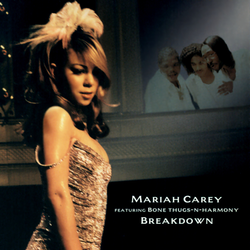
"Breakdown" is a song recorded by American singer Mariah Carey for her sixth studio album, Butterfly (1997). In the lyrics, she describes the aftermath of a partner ending their love for the other and the trouble of hiding the pain it caused. The track features rapping by Krayzie Bone and Wish Bone, members of the group Bone Thugs-n-Harmony. Before they wrote and performed their raps, Carey composed the music with Stevie J and penned her lyrics. The latter pair produced "Breakdown" with Sean "Puffy" Combs. An R&B, hip hop, and hip hop soul song, "Breakdown" features keyboards, synthesized drums, and background vocals prominently. Columbia Records released it to American rhythmic contemporary radio stations in January 1998 as the third single from Butterfly.
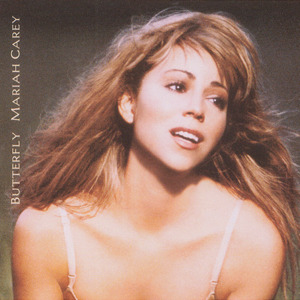
"Butterfly" is a song recorded by American singer-songwriter, and record producer Mariah Carey for her sixth studio album of the same name (1997). It was released on September 29, 1997, by Columbia Records as the second single from the album. The song was written and produced by Carey and Walter Afanasieff. "Butterfly" is a pop and R&B ballad combining elements of gospel. Carey had originally conceived it as a house record with David Morales titled "Fly Away". After realizing how personal the lyrics were and how they could be applied to Butterfly, she wrote the album's title track with Afanasieff. On the song's lyrics, Carey sings to someone, telling them to spread their wings and release into the world on their own, like a butterfly.

"Anytime You Need a Friend" is a song by American singer and songwriter Mariah Carey. The song was written and produced by Carey and Walter Afanasieff, for her third studio album, Music Box (1993). It was released on May 24, 1994, through Columbia Records, as the fifth and final single from the album. The song is influenced by pop, R&B and gospel genres. While the album focused heavily on pop oriented and radio friendly material, "Anytime You Need a Friend" deviated from the formula, finishing as the only gospel-infused song on Music Box. Lyrically, the song's protagonist tells her love interest that anytime he may need a friend, she will be there unconditionally for him. Throughout the song's bridge and climax, critics noted the lyrics altering from those of a friend, to those of a lover.

"Can't Let Go" is a song recorded by American singer Mariah Carey for her second studio album, Emotions (1991). Columbia Records released it as the album's second single in November 1991. Featuring synthesizers and drum programming, "Can't Let Go" is a breakup song in the form of an R&B and pop slow jam. The lyrics, written by Carey, are about sadness after the end of a relationship. She composed the music and produced the song with Walter Afanasieff, who had previously worked on her 1990 single "Love Takes Time". Carey's vocal range spans more than three octaves; her delivery is predominately breathy and in a low register, with whistle notes featured in the song's introduction and ending.

"Make It Happen" is a song by American singer and songwriter Mariah Carey. Written and produced by Carey and C+C Music Factory's David Cole and Robert Clivillés. It was released on April 4, 1992, by Columbia Records as the third and final single from her second studio album, Emotions (1991). The pop-, R&B-, and dance-influenced track incorporates traces of gospel in its bridge and crescendo. Described by author Chris Nickson as Carey's most personal and inspirational song, it tells of her personal struggles prior to her rise to fame, and how her faith in God helped sustain her.

"Someday" is a song by American singer and songwriter Mariah Carey from her self-titled debut studio album (1990). It is a dance-pop, new jack swing and R&B song. Prior to Carey signing a record contract, she and producer Ben Margulies had written and produced a four-track demo which included "Someday". After signing a contract with Columbia Records, Carey began work on her debut album and she reached out to Ric Wake to ask if he would produce the song, to which he agreed. The composition of the demo recording was changed during the recording process, most notably replacing the horns with a guitar, which Carey disapproved of.

"Love Takes Time" is a song recorded by American singer-songwriter Mariah Carey for her eponymous debut studio album (1990). Written by Carey and Ben Margulies, while produced by Walter Afanasieff, the song was released as the second single from the album on August 22, 1990, by Columbia Records. An adult contemporary-influenced ballad, the song follows its protagonist lamenting the loss of a lover and confesses that "love takes time" to heal and that her feelings for her ex-lover remain.
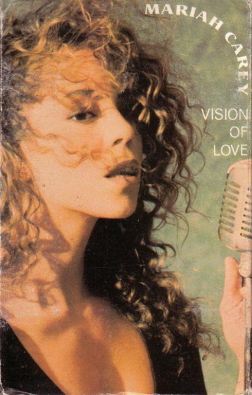
"Vision of Love" is the debut single by American singer-songwriter Mariah Carey for her eponymous debut studio album (1990). It was written by Carey and Ben Margulies. After being featured on Carey's demo tape for Columbia Records, the song was re-recorded and produced by Rhett Lawrence and Narada Michael Walden. The song features a slow-dance theme tempo and backing vocals sung by Carey herself, and introduces her usage of the whistle register. The lyric of the song represents her past life filled with "alienation" and how she had dreamt of achieving her triumph over adversity up to the moment when it finally came to fruition as the "vision of love" that she had always believed in, despite everything that she has had to deal with in life. This was Carey's debut record and was released as the lead single from Mariah Carey on May 15, 1990, by Columbia Records.

"Dreamlover" is a song recorded by American singer-songwriter and record producer Mariah Carey, released on July 27, 1993 by Columbia, as the lead single from the singer's third studio album, Music Box (1993). Its lyrics were written by Carey, with music composed by Carey and Dave Hall, and was produced by Carey, Walter Afanasieff and Hall. The song incorporates a sample of the hook from "Blind Alley" by the Emotions—previously used in "Ain't No Half-Steppin'" (1988) by Big Daddy Kane—into its melody and instrumentation. "Dreamlover" marked a more pronounced attempt on Carey's part to incorporate hip hop into her music, as was seen in her decision to work with Hall, who had previously produced What's the 411? (1992) by Mary J. Blige. This was partly in light of the mixed reception to her previous studio effort Emotions (1991), which featured gospel and 1960s soul influences. Lyrically, the song pictures a protagonist calling for a perfect lover, her "dreamlover," to whisk her away into the night and not "disillusion" her like others in the past.

"My All" is a song by American singer-songwriter Mariah Carey from her sixth studio album, Butterfly (1997). It was released as the album's fifth single overall and second commercial single on April 21, 1998, by Columbia Records. The song was written and produced by Carey and Walter Afanasieff. "My All" is built around Latin guitar chord melodies, and makes subtle use of Latin percussion throughout the first chorus, before taking on a more conventional R&B-style beat. Carey was inspired to write the song and use Latin inspired melodies after a trip to Puerto Rico, where she was influenced by the culture. The song's lyrics tell of a lonely woman declaring she would give "her all" to have just one more night with her estranged lover. It is the first song Carey wrote for the Butterfly album.

"Hero" is a song by American singer-songwriter, and record producer Mariah Carey released on October 18, 1993, via Columbia Records as the second single from her third studio album, Music Box (1993). The song was written and produced by Carey and Walter Afanasieff. While writing the song, Carey did not connect to its style or sound, therefore forfeiting it to Gloria Estefan, who was intended to sing it for the soundtrack of the film of the same name (1992). However, after being convinced by Sony executive Tommy Mottola to keep it for herself, she changed some of the lyrics to more precisely fit her personality. Lyrically, the song is regarded as one of Carey's most inspirational and personal ballads, with its protagonist declaring that even though people may feel discouraged or down at times, in reality, they are "heroes" if they look inside themselves and see their own inner strength; in time, it will help them "find the way".

"Fantasy" is a song by the American singer-songwriter Mariah Carey. It was released on August 23, 1995, by Columbia Records as the lead single from her fifth album, Daydream (1995). The track was written and produced by Carey and Dave Hall. It samples Tom Tom Club's 1981 song "Genius of Love". The lyrics describe a woman who is in love with a man, and how every time she sees him she starts fantasizing about an impossible relationship with him. The remix for the song features rap verses from Ol' Dirty Bastard, something Carey arranged to assist in her crossover into the hip-hop market and credited for introducing R&B and hip hop collaboration into mainstream pop culture, and for popularizing rap as a featuring act.
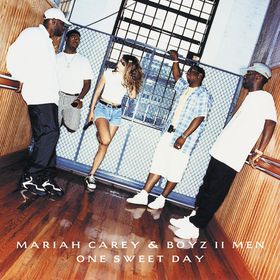
"One Sweet Day" is a song by American singer-songwriter Mariah Carey and American vocal group Boyz II Men. The song was released on November 14, 1995, as the second single from the former's fifth studio album, Daydream (1995) by Columbia Records. The artists co-wrote the song with Walter Afanasieff, who co-produced it with Carey. Lyrically, the song speaks about the death of a loved one, how the protagonist took their presence for granted and misses them, and finally about seeing the person in heaven. The artists wrote the song about specific people in their lives, being inspired by sufferers of the AIDS epidemic, which was globally prevalent at the time.

"Always Be My Baby" is a song recorded by American singer-songwriter, and record producer Mariah Carey for her fifth studio album, Daydream (1995). It was released by Columbia Records on February 20, 1996, as the third single in the United States and fourth worldwide. Written and produced by Carey, Jermaine Dupri and Manuel Seal, "Always Be My Baby" is a midtempo song, with lyrics describing the feeling of attachment and unity the singer feels towards her estranged lover, even though they are no longer together, she says he will always be a part of her and will "always be her baby" even after they move on.
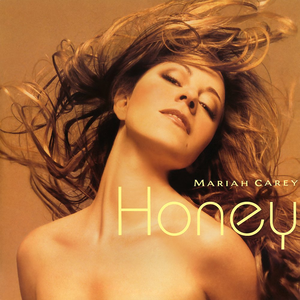
"Honey" is a song by American singer and songwriter Mariah Carey from her sixth studio album, Butterfly (1997). It was released as the lead single from Butterfly on July 29, 1997, by Columbia Records. The song was written and produced by Carey, Sean Combs, Kamaal "Q-Tip" Fareed and Steven "Stevie J" Jordan. The song samples "Hey DJ" by World-Famous Supreme Team and "The Body Rock" by the Treacherous Three. "Honey" was a redefining song in Carey's career, pushing her further into the hip hop scene.

Emotions is the second studio album by American singer-songwriter Mariah Carey. It was released on September 17, 1991, by Columbia Records. The album deviated from the formula of Carey's 1990 self-titled debut album, as she had more creative control over the material she produced and recorded. Additionally, Emotions features influences from a range of different genres, as well as 1950s, 1960s and 1970s balladry infusion. On the record, Carey worked with a variety of producers and writers, including Walter Afanasieff, the only holdover from her previous effort. Additionally, Carey wrote and produced the album's material with Robert Clivillés and David Cole from C+C Music Factory and Carole King, with whom she wrote one song.

Here Is Mariah Carey, also known as Mariah Carey or This Is Mariah Carey, is the third video album by American singer Mariah Carey. It presents Carey performing live at Proctor's Theatre in Schenectady, New York, in July 1993, and also includes non-concert footage. Carey performs ten songs during the video; four are from her third studio album Music Box (1993), which Columbia Records commissioned Here Is Mariah Carey to promote. She is sporadically accompanied by a band, choir, dancers, and string musicians. In creating the stage for the performance, production designers sought inspiration from works by Boris Aronson and Josep Maria Jujol. Lawrence Jordan, who collaborated with Carey on previous occasions, directed the hour-long video.

The First Vision is the debut video album by American singer and songwriter Mariah Carey, released by Sony Music Video on January 22, 1991. It is a collection of music videos, live performances, and film footage detailing the development and promotion of Carey's first studio album Mariah Carey (1990). Music videos of three Mariah Carey singles – "Vision of Love", "Love Takes Time", and "Someday" – are featured, as are snippets of the future singles "I Don't Wanna Cry" and "There's Got to Be a Way". The collection presents Carey performing at New York City's Club Tatou and behind-the-scenes footage of her rehearsing for appearances on Saturday Night Live and It's Showtime at the Apollo. During an interview segment, Carey answers questions about her life and music.






















